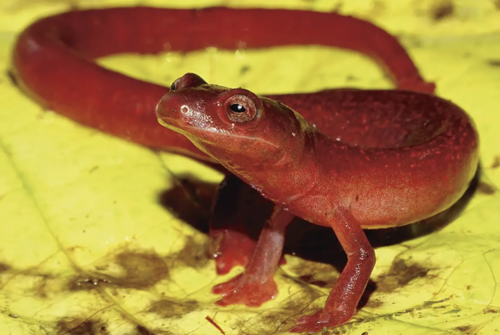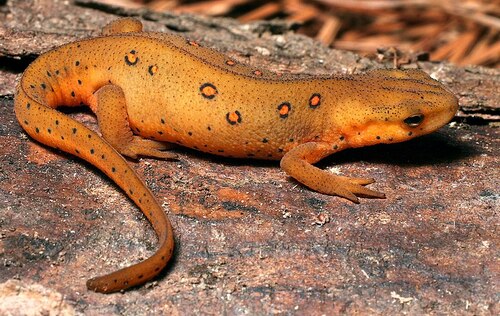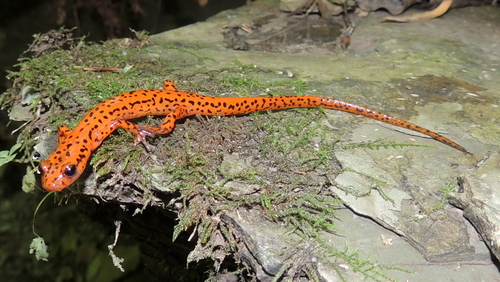When you think of small, slippery, and mysterious creatures of the forest or ponds, both newts and salamanders probably come to mind. They’re often mistaken for one another, but these two amphibians have unique characteristics that make them stand apart. Let’s dive into the fascinating world of newts and salamanders to uncover the key differences that separate them. By the end of this, you’ll be a master at telling these two apart!
Both newts and salamanders belong to the order Caudata, meaning they’re part of the same extended family of amphibians. The confusion often arises because all newts are technically salamanders, but not all salamanders are newts. Think of it like the square-rectangle rule: every newt is a salamander, but not every salamander qualifies as a newt!
So, what sets these creatures apart? Let's take a closer look.
| Feature | Newt | Salamander |
|---|---|---|
| Habitat | Spend more time in water | Tend to stay in moist, land-based habitats |
| Skin Texture | Rough, often dry, and more bumpy | Smooth and moist |
| Lifespan | Typically live longer (up to 15 years) | Often have shorter lifespans (5-10 years) |
| Tail Shape | Flattened like a paddle for swimming | Rounded, cylindrical |
| Toxicity | Often produce toxins as a defense | Most do not have toxins |
| Metamorphosis | More drastic transformation from larvae | Less pronounced change from juvenile to adult |
| Breeding | Mostly breed in water | Breeding can occur in both land and water |
Newts are often described as the amphibians that love the water. While they do spend time on land, especially during certain life stages, many species prefer living in or near water for most of their lives. Their paddle-like tails are perfect for swimming, and their rough, almost warty skin helps differentiate them from their smoother cousins.
Many newts, like the famous Eastern Newt, also possess a powerful defense mechanism: toxins. They secrete poisons through their skin to ward off predators, making them less appetizing to would-be attackers. Their striking orange-red underbelly is often a warning sign of their toxicity.

Salamanders, on the other hand, are more land-loving creatures, often found hiding under logs or moist leaves. Their smooth skin needs to remain wet, so they tend to stick to damp environments. Though some species do spend time in water, they are not as aquatic as newts.
A cool fact about salamanders is that they come in many varieties—some can regrow lost limbs, while others have lungs, gills, or even neither! While most salamanders lack the toxic defenses of newts, they still manage to survive by relying on their stealth and nocturnal habits.

Both newts and salamanders face threats from habitat destruction, climate change, and pollution. Many species are protected due to their declining populations. Below is a table summarizing their conservation status.
| Species | Conservation Status |
|---|---|
| Eastern Newt | Least Concern |
| Great Crested Newt | Near Threatened |
| Axolotl (Salamander) | Critically Endangered |
| Tiger Salamander | Least Concern |
The good news? Conservation efforts are helping to protect these amphibians and their habitats, but it’s up to us to ensure they continue to thrive.
So, while newts and salamanders may seem similar at first glance, they each lead distinct lives with different habits, appearances, and survival strategies. Next time you’re out exploring, take a moment to observe these fascinating creatures—just remember not to handle them, especially if it’s a newt. Their toxic skin can pack quite a punch!
Will you become team Newt or team Salamander? Either way, both are extraordinary creatures that play an important role in the ecosystem, reminding us just how diverse and magical the natural world is!
When it comes to newts and salamanders, these small amphibians are not typically known for being aggressive or dangerous. However, they do possess some interesting defensive mechanisms that can be harmful in certain situations.
Newts, especially species like the Eastern Newt and the Rough-Skinned Newt, can be quite dangerous if their toxic defenses are activated. Many newts produce a potent neurotoxin called tetrodotoxin, the same toxin found in pufferfish. This toxin is a defense mechanism designed to deter predators. It can be harmful, and in some cases fatal, if ingested.
Danger to Humans: The toxins secreted by newts aren’t typically dangerous through skin contact unless you have an open wound or touch your mouth, eyes, or other mucous membranes afterward. However, ingesting the toxin can cause serious harm, leading to numbness, paralysis, and even death if consumed in large amounts. That being said, newts are not aggressive and do not attack humans; the danger primarily arises from handling or accidentally consuming them.
Danger to Other Animals: Many predators avoid newts due to their bright warning colors, which indicate toxicity. Some animals, like garter snakes, have developed a resistance to tetrodotoxin and can consume newts without serious harm, though it may slow them down.

Most salamanders are not toxic and rely on their ability to hide, stay nocturnal, and blend into their environment to avoid predators. Some species, like the Tiger Salamander, produce a mild toxin that irritates predators, but it’s not as potent as the toxin found in newts.
Danger to Humans: Salamanders pose little to no danger to humans. They are non-aggressive and generally shy, avoiding human interaction. Handling them can be harmful to the salamander itself due to the oils and salts on human skin, which can damage their sensitive, permeable skin.
Regeneration Superpower: Though not a form of aggression or defense, some salamanders have an extraordinary ability to regenerate lost limbs, tails, and even parts of their heart or brain. While this isn’t an attack mechanism, it certainly helps them survive injuries from predators.

Both newts and salamanders are not known for being outwardly aggressive toward humans or pets. However, there are a few important factors to keep in mind:
Handling Risks: If you touch a toxic newt and then touch your eyes, mouth, or open wounds, you can risk poisoning yourself. It’s always advised to wash your hands thoroughly after handling amphibians of any kind.
Pet Safety: Dogs or other animals that try to bite or eat newts may be at risk of poisoning, especially with highly toxic species. If your pet ingests a newt, it’s best to seek veterinary attention immediately.
Newts: Newts are non-aggressive and prefer to avoid confrontation, relying on their toxins to discourage predators rather than attacking. They do not bite or engage in any aggressive behavior toward humans.
Salamanders: Salamanders are also non-aggressive creatures. They are shy and nocturnal, and they would rather flee than fight. They don't have potent toxins like newts, and biting or aggressive behavior is extremely rare.
Neither newts nor salamanders are aggressive or dangerous under normal circumstances. Their primary defense is toxicity (in newts) or stealth (in salamanders). As long as you respect their habitats and avoid handling them without proper precautions, these creatures are harmless to humans.
animal tags: Newt Salamander
We created this article in conjunction with AI technology, then made sure it was fact-checked and edited by a Animals Top editor.